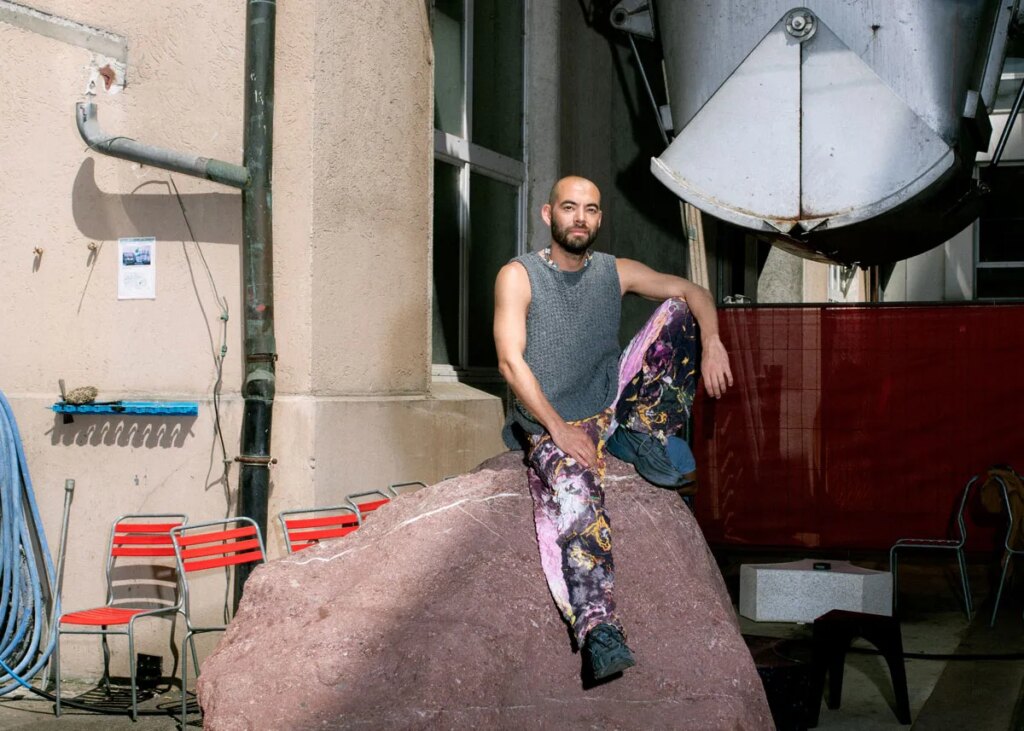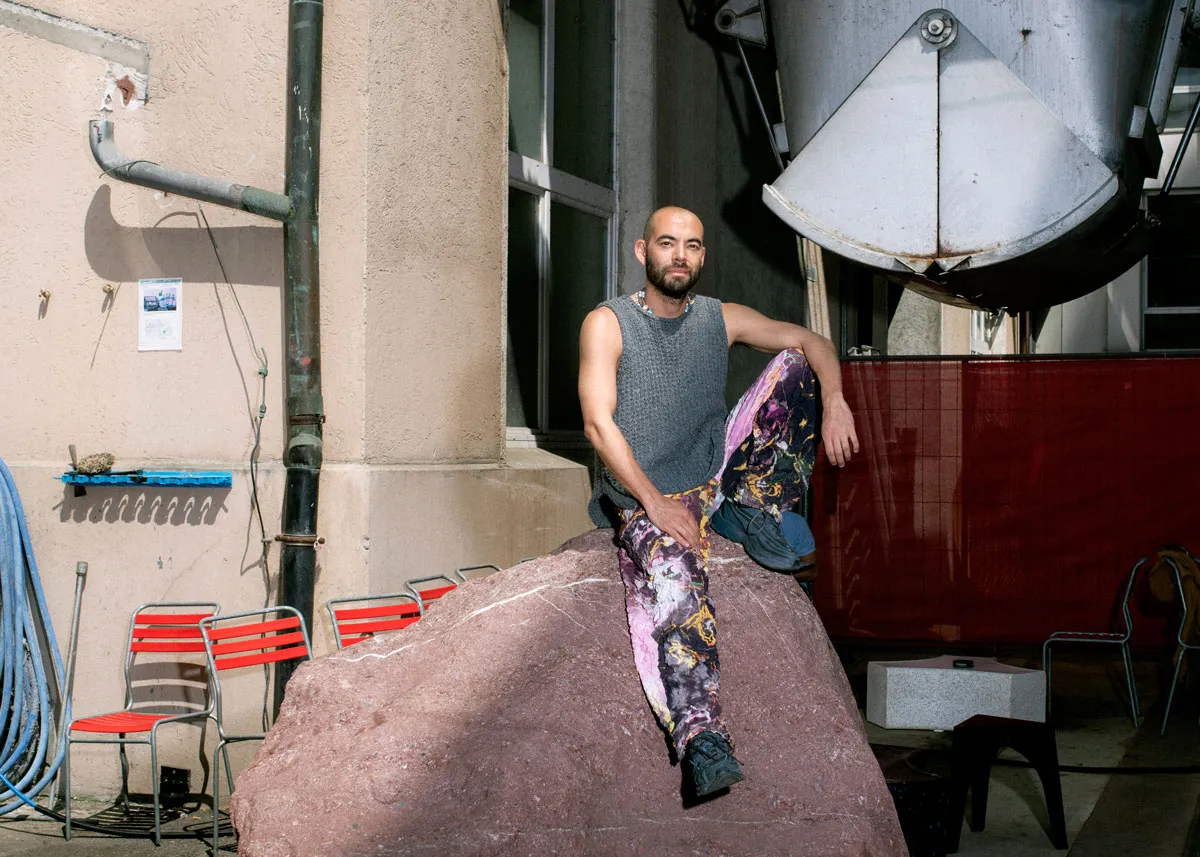
Editor’s Note: This story is part of Newsmakers, a new ARTnews series where we interview the movers and shakers who are making change in the art world.
A few days before Art Basel Paris was set to open last month, Paris-based Fitzpatrick Gallery sent out an email to its subscribers titled “The Next Chapter.” In it, founder Robbie Fitzpatrick announced that the forthcoming Hannah Weinberger exhibition, “Someday You’ll Join Us,” would, in fact, be the final one at the gallery’s physical space in the Marais neighborhood of the French capital.
That exhibition saw the gallery space completely empty, with almost all the lights turned off and no staff present on-site. It looked closed, though the door was unlocked for the show’s run, October 12 to October 26. Upon entering, you could hear a woman, Weinberger, singing John Lennon’s “Imagine” in an eerie a capella. The finality of the exhibition was palpable.
Moving forward, Fitzpatrick Gallery will operate as “a nomadic program of site-specific exhibitions in unique locations, in some of my favourite cities across the globe.” He continued, “We live in a world that has become increasingly gripped by consuming all that surrounds us, in an accelerated, frenzied pace, and over the past decade I’ve witnessed the art world follow the same course. I hope this new proposition provides an opportunity for an alternative—a model that emphasises experience over consumption.”
Fitzpatrick started his gallery in Los Angeles in 2013 as Freedman Fitzpatrick with Alex Freedman, who was also one of his cofounders for the short-lived alternative LA art fair, Paramount Ranch. The gallery opened its Paris outpost in 2018. When Freedman stepped away from the gallery, Fitzpatrick paused his gallery’s programming just a few months before the pandemic, reopening at his most recent Paris location in 2020. In 2022, with Weinberger and a collective of other art professionals, he cofounded the acclaimed anti-fair Basel Social Club, which they plan to continue. Under this new gallery model, Fitzpatrick will remain based in Paris and mount exhibitions at unconventional venues in Paris and around the world.
To learn more about his decision to go nomadic, his travails from LA to Paris, and what the state of the market means for galleries like his, ARTnews spoke with Fitzpatrick by phone.
This interview has been edited and condensed for clarity and concision.

ARTnews: Can you tell us a little bit about the history of your gallery, which you started over a decade ago?
Robbie Fitzpatrick: The origins of the gallery started in Los Angeles, and the original name of the gallery was Freedman Fitzpatrick. Together with my former business partner, Alex Freedman, we decided to open in LA. We had first met in Berlin, where we were both living at the time. I was working as the director of Tanya Leighton Gallery, and Alex was a freelance curator and critic. We had curated some shows together, and early on in our friendship, we decided that we would embark on a gallery venture. She grew up in LA and proposed that we open there. We found an eccentric little spot in a strip mall on Hollywood Boulevard. In the early days of our program, we were showing primarily European artists, artists who we knew from our time in Berlin. For the most part, they were the debut shows for these artists, or at least their first shows the United States. We started the program with a sort of pioneer spirit of bringing artists from Europe, and we slowly cultivated this community of artists who relocated to LA.
Within the first year of running the gallery, we also decided to start an alternative art fair called Paramount Ranch, which we did with two local artists, Pentti Monkkonen and Liz Craft. That ran for three years. In the same vein as the gallery, the spirit of Paramount Ranch was also pioneering in that we invited a lot of galleries from outside of LA, from Europe, from Asia, to take over this former film set. It was an Old West town where Paramount Pictures shot all their cowboy westerns.
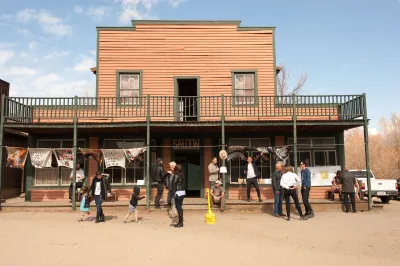
How would you characterize the art market in LA, when you opened up there more than a decade ago, before LA had the market presence it enjoys now?
When we opened the gallery in 2013, there was a whole generation of young galleries that were popping up in LA. Chateau Shatto opened later that year. Jenny’s opened a year later. There was Paul Soto with his apartment gallery, Park View. There was this really raw energy. It felt like with every month, there was a new wave of people moving to LA. It was at a time in which LA was a lot more affordable than now. It felt like there could be a little bit more experimentation. There certainly wasn’t the same kind of flood of galleries that you do have now. It also felt like collectors had the attention span or bandwidth to go and see all the shows of these young, up-and-coming galleries. There was a collector base that was really supporting the community there, so we did thrive. It allowed us to more easily, get into some of the bigger name art fairs; within the first year of having the gallery, we were in Art Basel Miami Beach and Liste Art Fair in Basel. There wasn’t the same kind of competition coming out of the LA gallery scene.
How did you land in Paris?
After having the space for five years in LA, we decided to expand and opened a second branch of our gallery in Paris. The main reason is that we found ourselves going back to Europe all the time, whether that be for fairs or institutional shows of our artists or biennials, because of how European our program was. While we had an audience in LA, we also had a strong following in Europe. It was a strategic move at that time, and I personally volunteered to be the one to move to Paris to oversee that expansion. For a two-year period from 2018 to the end of 2019, we had the two locations. In 2019, Alex, my former business partner, decided that she wanted to take a step away from the gallery, so at the end of 2019, I made the decision to take a quiet pause. I gave up the leases in both LA and in Paris. My timing was quite fortuitous because just a few months later Covid happened and the pandemic, of course, forced everyone to slow down their operations.
It was during those months when I decided that I would continue on my own, that I would rebrand the gallery with just my name, and started to look for a new location, which took me about a year to find. I reopened with a large group show in the new space in September 2021. But it was during that year of Covid confinement when I had this idea to have a nomadic program. I questioned whether I needed to have a fixed space, and whether the validity of that would be a requirement for me to continue working with my artists. While I felt it was something instinctually that I wanted to do, almost everyone around me said, “No, you need a fixed space.” I’m very proud of the programming we did [at that space]. But after having done that for three years, recognizing a lot of the changes in the market and also my own aspirations for the kind of shows that I want to do, for the kind of program that I want to continue doing, I feel like, going back to my gut instinct for the program a few years ago, I can have a successful program without having a fixed-shop operation.
With Paris, you opened there just as the city was receiving a market revival, in the wake of Brexit.
We opened in 2018, so it was right around then. But that wasn’t a deciding factor at all. We had been going to Paris for a few years prior, with our participation in FIAC, the fair that preceded Art Basel. It was always a great fair for us. We loved being in Paris. We previously had done Frieze London. I just personally felt like there was the potential for Paris to blossom into a great cultural capital again. Inevitably, of course, it has, it has fulfilled that destiny. Having lived in Berlin also at a moment when it was thriving, and then, of course, seeing LA evolve during the years that we were there, I would say that I think I have a pretty strong sense of intuition about these things. Not that I’m declaring myself as a fortune teller. It’s been interesting to see how Paris has grown so quickly in the years that I’ve been here.
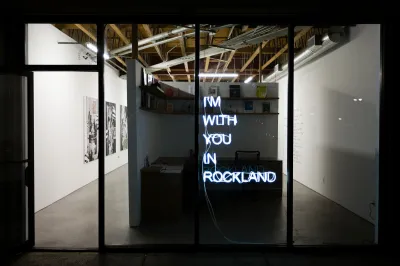
And how would you characterize how the art market has changed between when you started in LA in 2013 and today?
I do notice a big difference between now and then in terms of the engagement. It felt like collectors had more time, more of an attention span to discover young artists, especially work that might be a little bit more challenging, that isn’t easily digestible from a JPEG. Now, it feels like many collectors are overwhelmed by the volume of art that has been thrown at them. I certainly don’t blame them. I myself feel the same way.
I hear all the time people can’t keep up with all the previews that they receive.
That actually is a big factor in why I’ve decided to strategically change the way that I mount exhibitions and engage with my audience. I sent out an email that was quite personal just before we opened the last show at the gallery, and I did discuss the necessity to create a context of an experience again, because I do feel like my audience is so bombarded, overwhelmed, and burnt out from the sheer velocity of exhibitions, art fairs, etc. that happen. But when you create a context of an exhibition where the emphasis is on experience, whether that be because the location itself is just so unique or idiosyncratic, you already are able to sort of cut through the noise and get the attention of your audience.

At least I found that to be the case with a show that I did earlier this year in February in Los Angeles with one of my artists, French painter Cédric Rivrain. We presented his work in a mid-century Case Study home in Los Angeles in the residential neighborhood of Laurel Canyon in the Hollywood Hills. It was during Frieze and Felix fairs there. The show was very successful. People spoke about it, heard about it in passing, and decided to make the adventurous trip up the winding road of the Hollywood Hills to see it, precisely because of the unique experience that it provided. It wasn’t like seeing art in another gallery space. It was in that moment when I realized, OK, this is how I want to continue presenting my artists’ work. It was fulfilling for me personally. Cédric was a little bit reluctant at first, but he later admitted that if this were to have been presented, let’s say, at the Paris gallery, it wouldn’t have had the same resonance, even just from the documentation, as it did from the show that we mounted in that space and in that house. That was a moment of epiphany for me. It felt like it could have lasting resonance as a gallery program.
So moving forward, you plan to mount exhibitions within these kinds of unique spaces, as opposed to renting out a space that could look like another gallery anywhere in the world?
That’s precisely the case. None of the shows will be in locations that look like a conventional gallery space. I’m not interested in storefronts. I have been doing a lot of research, and what I discovered through my research is that the world is full of empty, interesting spaces that have historic importance or have a unique architectural story. That’s what excites me, and all the artists that I work with are equally inspired by the opportunity to show their work in those kinds of spaces.
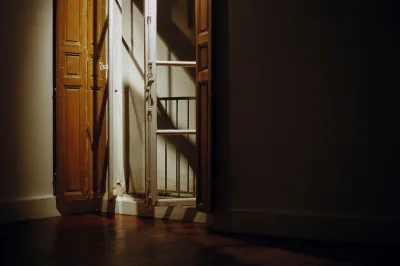
How did you decide on the closing show with Hannah Weinberger serving as a farewell to the Paris show?
Hannah Weinberger is a Swiss artist who largely works with sound and video installations. Many of her exhibitions are these sorts of immersive experiences that are almost impossible to translate without being physically present. The argument that I made before about experience is really at the heart of how you engage with Hannah’s work. Hannah is one of the original artists of the gallery program from the early LA days. She’s also the artist that I worked with to announce the rebranding of the gallery in 2020 with this interactive sound experience that was global, in that we actually had 13 different locations that hosted the interactive sound experience. The logo for Fitzpatrick Gallery originated from that project.
Additionally, Hannah is one of the cofounders of the Basel Social Club, which is another project I initiated. She’s based in Basel. A lot of people mistakenly attribute the Basel Social Club solely to me, maybe just because of my role as a gallerist, but Hannah plays a pivotal role in in the artistic direction of that project. I think that’s why that project is so successful because an artist is involved and key to the experience of it.
When Hannah and I were discussing the [final] exhibition, we had several different ideas, but we thought the most minimal gesture would have the most maximal response. She suggested the gesture of her singing “Imagine,” this famous John Lennon song, on repeat. It’s actually a one-hour loop of her singing the song in the space. It has this haunting echo effect. We decided also not to have a press release to explain it. We felt that it was quite self-explanatory, and one can read into it on multiple levels. For me, this idea to offer to the audience to use their imagination was poignant for my own story. Some people have been a little bit narrow-minded in understanding how I can function as a gallerist without a fixed location. My rebuttal to that is, “Well, use your imagination.”

For so long, the art world has been quite conservative and obsessed in its categorization: an art fair has to look like this, a gallery has to be run like that. I do feel that this moment—perhaps because it’s a moment of multiple crises—provides the perfect opportunity for us to reimagine and reexamine those models. I certainly feel that’s the case with what we’ve done with the Basel Social Club, which, we continue to reiterate, is not an art fair. That continues to confuse people.
That’s certainly one level of understanding the exhibition. Of course, the song is a peace-protest song as well. For Hannah, there’s a personal message there. We can’t deny the ongoing wars that are happening right now outside of our art world bubble, which is very myopic and insular. There is a world with many people struggling, and it also felt quite poignant and pertinent to address that in a soft way.
And more broadly, the state of the market is currently have a real effect on galleries like yours that represent more emerging and mid-career artists who are open to experimentation. How has your gallery been affected, first, by the active buying during lockdown, and now, the cooling that we’ve been witnessing over the past year?
You can feel that collectors are burnt out. What happened during Covid is, honestly, a little bit too much online shopping. Collectors had a lot of time, and they were literally buying works from viewing rooms. A lot of that work arrived to their homes, and I think what many people experienced was a kind of buyer’s remorse. For every work they were happy to receive, there was one that felt like maybe a mistake buy. There was no way for this community of collectors collectively to continue shopping at the rate in which they were a few years ago. Literally, their storages were maxed out. With inflation, the cost of shipping, storage, and all other things have added up. That’s certainly impacted galleries, but I think that’s also been a deciding factor in collector habits: “Do I want to spend this much money to ship this work?” There’s a lot of add-on costs that come with the purchase of an artwork, which are also being more carefully considered with each purchase.
And then, I feel that there were certain trends that were discussed heavily by the media. Of course, figuration was hot topic for a while, and then there was sort of this response to that, with the argument that abstraction is having a moment. In the last few years since Covid, I felt that a lot of collectors just didn’t really even know what trend to hop on, or were questioning their own tastes or interests. There’s maybe a little bit of soul searching happening, and perhaps that’s a good thing. I certainly feel that collectors are much more careful for the reasons I mentioned before, but they also have to know that they confidently believe in the work. Every sale is taking a little bit longer now. We need to provide more information. Things are not just flying off the walls like at the pace in which they were maybe a few years ago. They want to feel that their money is being well spent, and have a 100 percent confidence in buying the work.
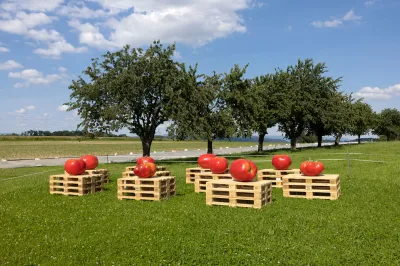
Is there anything else you’d like to add?
One of the contributing factors to this decision is certainly in evaluating the rigidity of the gallery model and some of the restrictions that I felt it placed on me. It requires you to have to program in the one space. I think that is what is contributing to a general burnout syndrome. I don’t just see it from collectors. I certainly see it for my gallery colleagues. I personally feel that way as well. Part of it is that you just can’t take a break. You have to keep programming all the time and not every exhibition sells well, but you still have to produce work or ship work. That’s one of the reasons why I feel like I want to break free from the model. It almost felt like the gallery was controlling me, rather than me having control over the progression of the program.

